For over 10 years of its war against Ukraine, Russia has destroyed many Ukrainian settlements. Millions of people have been forced to leave their homes. The Russians leave such destruction that there is simply nowhere to return to after de-occupation. Entire towns and villages remain only in the memory of their former residents…
Velyka Komyshuvakha. A small village in the Barvinkove Territorial Community, the Izyum district, the Kharkiv region. From March to September 2022, the village was on the forefront of the Russian-Ukrainian war. All these long months, the village was in the so-called gray zone – Russian ‘liberators’ entered it and, under our defenders’ pressure, left their positions before they could gain a foothold. The Russians’ plans to quickly take the village and advance toward Barvinkove failed. On September 10, Velyka Komyshuvakha was liberated from the enemy.
It’s hard to describe how the Russians left the village. Not a single surviving social facility, not a single house suitable for living. A wrecked de-occupied Velyka Komyshuvakha with equally wrecked human destinies. Here, every yard is an indescribable silent pain that makes you want to scream. Here, each family has their own tragic story that can and should be written about. Because each human story is a part of the Russian-Ukrainian war. One episode out of hundreds of thousands of facts of Russia’s war crimes against the peaceful civilian population of Ukraine.
“The main thing was to get away from that hell”
Three generations of the Shmatoks have linked their fate with Velyka Komyshuvakha. Mykola Serhiyovych and Valentyna Vasylivna lived here all their lives. Here they gave birth and raised their son Serhiy and daughter Iryna. Here their adult children started their own families and had children. They would still live in their home village. They would work on their farm, take care of the estate, grow their vegetables – as usual, as they used to, as everyone in the village did. It was… It was before the war. Before the terrible and tragic February 2022.
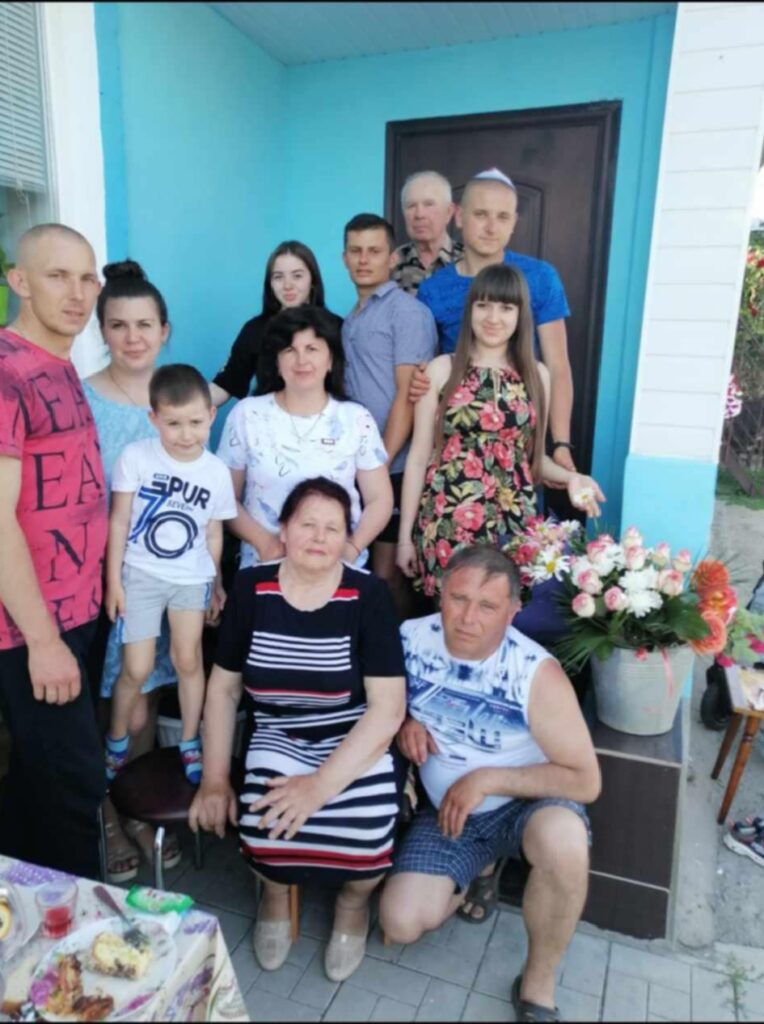
The enemy began targeting Velyka Komyshuvakha already in early March. Intensely, daily, with all types of weapons. Aviation, artillery – everything was targeting the village. When hiding in cellars became unbearable, people left their homes and fled wherever they could. The main thing was to get away from that hell…
… Mykola Serhiyovych, the head of the Shmatok family, flatly refused to evacuate. Though the enemy was firing from the sky and from the ground, he clung to his home. When his family persuaded him to leave, he answered firmly: you save yourself, go, and I’ll stay here.
His son Serhiy, who lived with his family in his parents’ house, sent his wife, daughter and granddaughter to a safer place in the west of Ukraine. He took his mother, Valentyna Vasylivna, not far away, to nearby Hrushuvakha, where it was calmer at that time. And he stayed in Velyka Komyshuvakha, because he couldn’t leave his father, who had diabetes, alone under fire.
On April 12, 2022, Mykola Serhiyovych finally agreed to evacuate. On the same day, Serhiy took his parents to the Poltava region. To the village of Holoborodkivske, where almost 50 of their fellow villagers had already taken refuge from the war.
There are only ruins and ashes in the Shmatoks’ yard
In the spring of 2022, a small diaspora of people from Velyka Komyshuvakha was formed in a village in the Poltava region. Everyone settled in the new place as best they could. They looked for housing, organized their lives. And they all stuck together. Anyone who heard or learned something about Velyka Komyshuvakha shared it with their countrymen. Because everyone’s thoughts and soul remained there, in their home village.
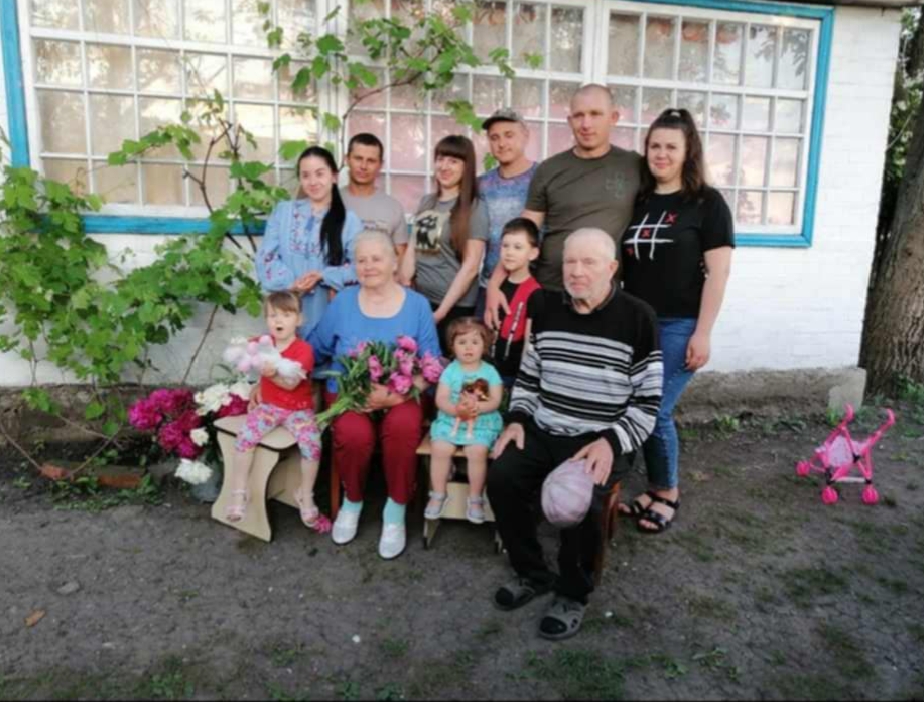
Half a year of living far from home, half a year of longing for their homeland. And the news from the village was disheartening, one worse than the other. It was obvious that the enemy was destroying their village, their homes…
“In September, after Velyka Komyshuvakha was liberated from the invaders, the villagers began to slowly return home. Those who were the first to leave began to send photos of the houses that had survived. We looked through the photos, but couldn’t find our house. When we went to the village ourselves, we understood why: people didn’t dare to take pictures of our yard. Because there was nothing to photograph there: only ruins and ashes,” says Halyna Shmatok.
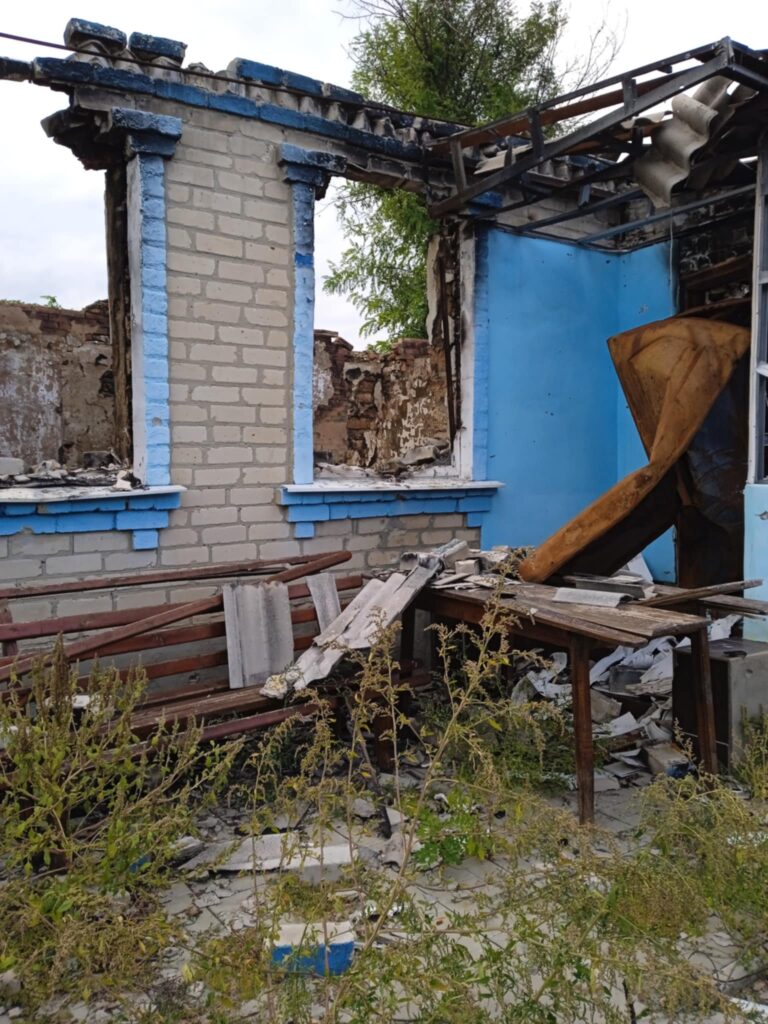
“When we went, so to speak, on a reconnaissance mission to Velyka Komyshuvakha, of course, we didn’t take Mykola Serhiyovych with us. The journey would have been physically and emotionally hard for him. Although he asked to go, he wanted to see the village, his homestead. We promised to tell him everything and show photos when we arrived,” continues Mykola Serhiyovych’s daughter-in-law.
“We fulfilled Father’s will – we buried him in our home village, next to our granny”
Those photos were painful for the elderly man. It was heartbreaking to see the ruins of what he had built with his own hands, into which he had put his heart and soul. Not only did his homestead cause anguish to him, but his soul ached to see what had happened to the village.
The village was built not only before his eyes, but with his active participation. Mykola Serhiyovych contributed a lot to the development of Velyka Komyshuvakha. He cared about the improvement of the village, the development of infrastructure, the comfort and well-being of the villagers at each post he held. Even on retiring, he continued to address people’s problems. For many years, he headed the veteran organization at the village council. He was one of the best union leaders not only in the district, but also in the region. Only before the big war, his illness made him step back, because after a serious case of Covid, his diabetes worsened other diseases.
His heart stopped on March 22, 2023. On the Feast of Holy 40 Martyrs. Mykola Serhiyovych’s mother died on this very day in 1999. She was 96. Her son was only 77. And he was making plans for a longer life. He said that genetics should work, and he wanted to do a lot more.
The war negated everything. The horrors of shelling, stress, evacuation, life far from home, the fate of his ruined home village, the loss of his home — all this affected the veteran’s health in one way or another.
He died far from home. But he ordered his family to bury him in his native village. Next to his mother. The children fulfilled their father’s will. Although it wasn’t easy. The cemetery is officially considered mined. They had to ask professionals to examine the area to the burial site…
Mykola Shmatok was laid to rest in his native land. The land where he was born and grew up, where his children, grandchildren, great-grandchildren were born…
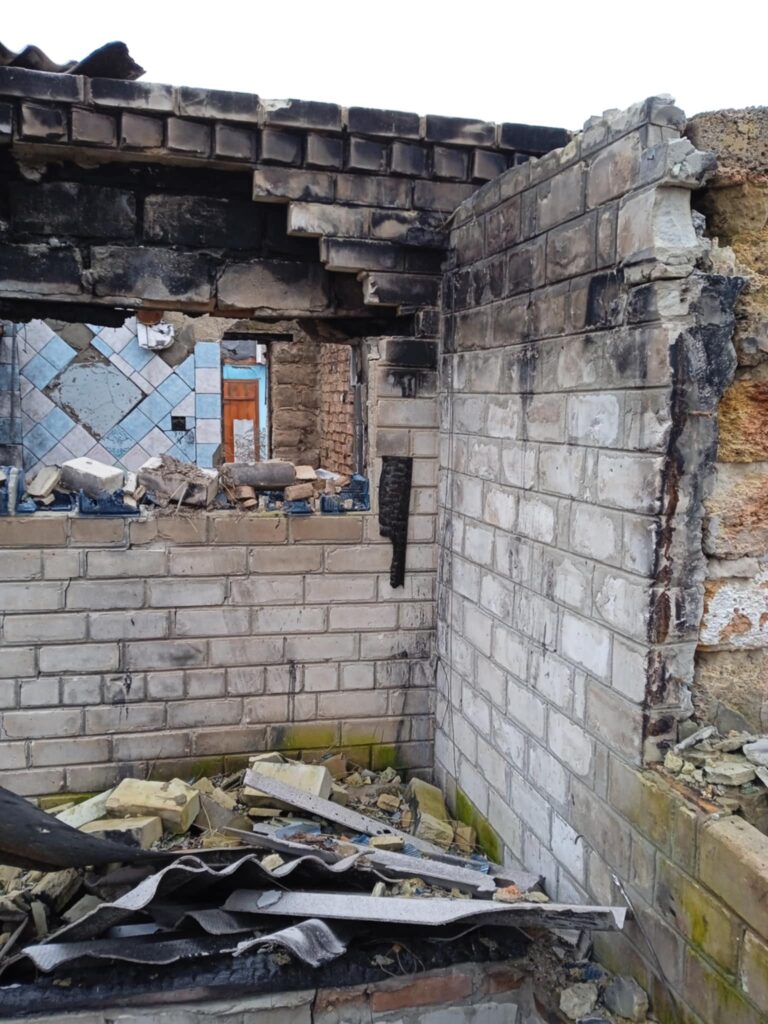
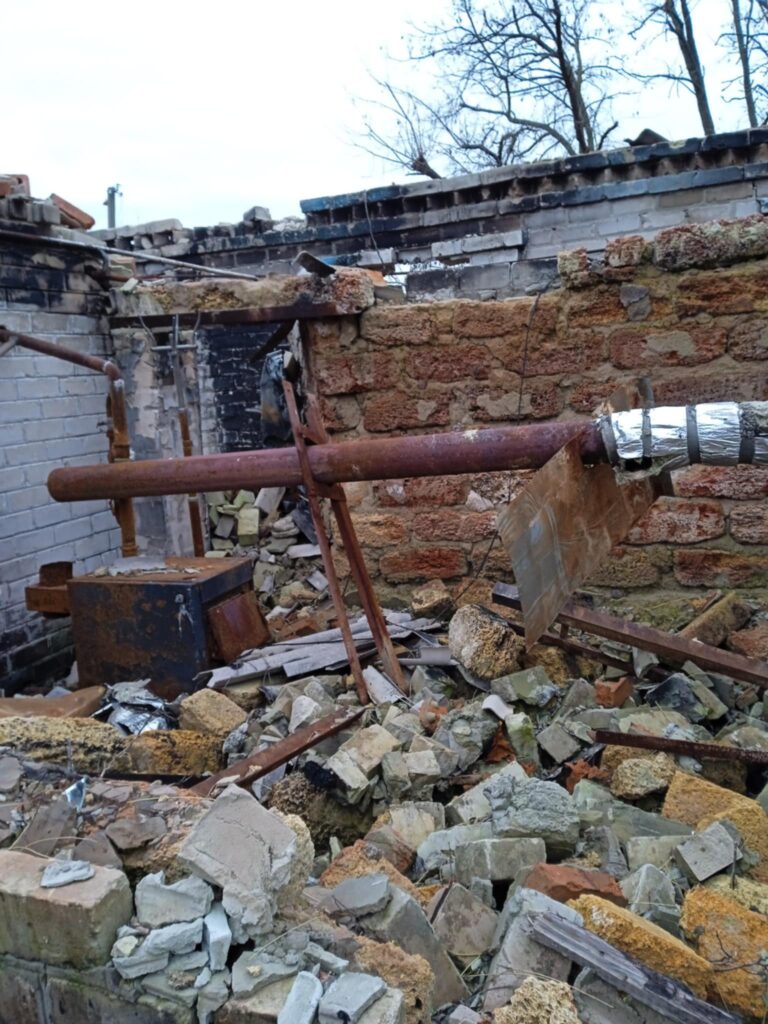
“It’s even easier to breathe in your home village”
But the Russians took away the opportunity to live and work on their native land from them, the Shmatoks’ descendants. They have nowhere to go back to. They have no home. They have nothing to restore or repair. Shmatok Jr.’s family remains there, in the village of Holoborodkivske, the Poltava region. They believed the war had temporarily driven them from Velyka Komyshuvakha. They believed they’d return after a week or two, or a month. But the expected return dragged on for years… And became a pipe dream.
“We occasionally visit our home village. We go to our homestead, visit our relatives’ graves at the cemetery,” says Halyna Shmatok. “And, you know, it seems to be easier to breathe there. And no matter where we are, no matter what our life is in the future, our road will still point to Velyka Komyshuvakha. Because everything is native there, everything is dear to the heart. Even if it is destroyed, even if it is burned, even if it is in ruins, it is our memory of a happy life. And these memories will warm our souls. And even the ruins will inspire us to live. Because it is the place of our strength. It was, is and will be.
Author: Iryna Stolbova
*All photos are provided by the author.
Supported by the U.S. Embassy in Ukraine. The views of the authors do not necessarily reflect the official position of the U.S. Government.



